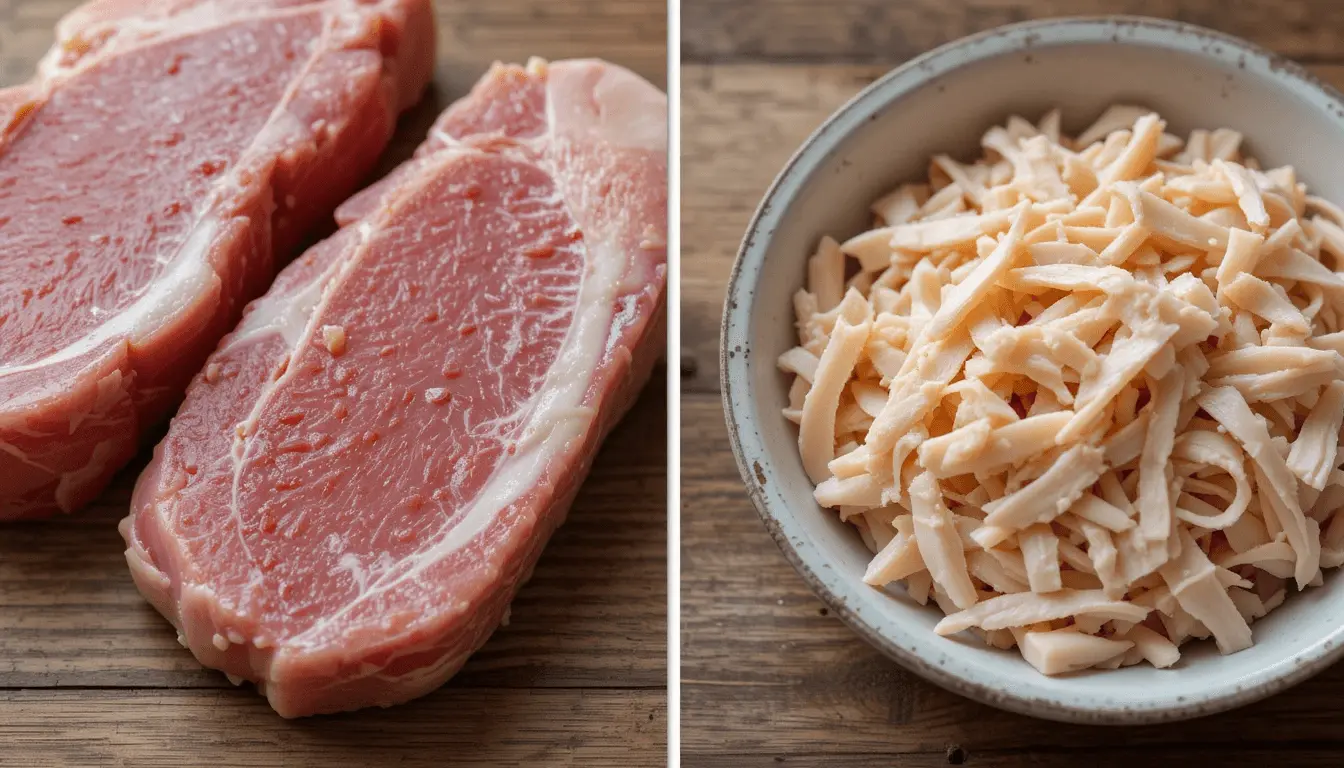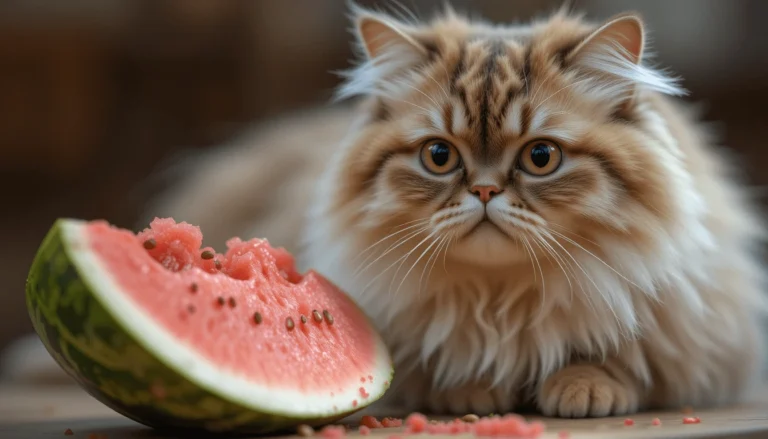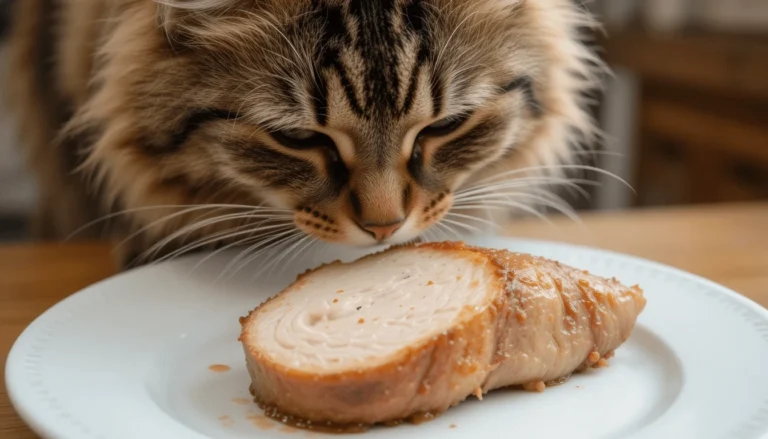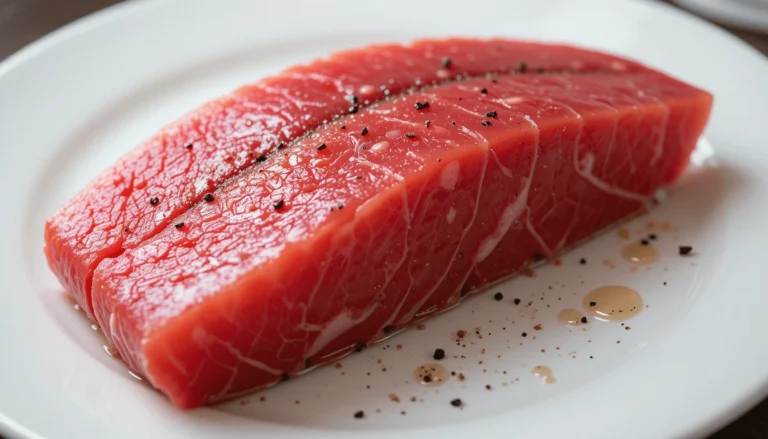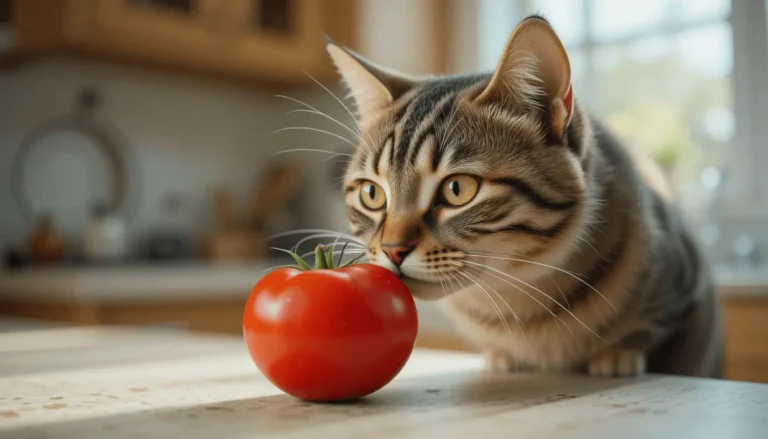Can Cats Eat pork? Risks, Toxicity, and Safe Alternatives
Introduction
“As your cat stares longingly at your dinner plate, a juicy piece of pork catches their eye. You pause—can cats eat pork, or is it dangerous? While pork isn’t inherently toxic, it comes with hidden risks every cat owner should know. From fatty hazards to seasoning dangers, let’s explore whether pork belongs in your feline’s diet—and what safer options exist.”
Risks of Feeding Pork to Cats
While pork isn’t inherently poisonous to cats, it poses several health risks that responsible pet owners should consider. Unlike dogs, cats have a more sensitive digestive system and a strict dietary requirement for animal protein—but not all meats are created equal. Below, we break down the three major dangers of feeding pork to cats.
1. High Fat Content & Risk of Pancreatitis
Pork, especially cuts like bacon, ribs, or pork belly, contains high levels of fat—far more than chicken or turkey. Cats are obligate carnivores, meaning they thrive on protein, not fat. Excessive fat intake can lead to:
- Pancreatitis: A severe inflammation of the pancreas, causing vomiting, dehydration, and abdominal pain. According to the Merck Veterinary Manual, high-fat diets are a leading cause of pancreatitis in cats.
- Obesity & Diabetes: Regular fatty treats contribute to weight gain and insulin resistance. The Association for Pet Obesity Prevention reports that 60% of U.S. cats are overweight, with diet playing a key role.
What to Watch For: If your cat eats fatty pork and shows signs of lethargy, refusal to eat, or repeated vomiting, seek veterinary care immediately.
2. Toxic Seasonings & Additives
Humans love seasoned pork—but common ingredients like garlic, onions, salt, and artificial flavorings are toxic to cats. Even small amounts can cause:
- Hemolytic Anemia: Onions and garlic contain thiosulfate, which destroys red blood cells. The ASPCA Animal Poison Control warns that as little as 5g of onion per kg of body weight can be dangerous.
- Sodium Poisoning: Processed pork (ham, sausages, deli meat) is loaded with salt, leading to excessive thirst, tremors, or even kidney damage.
Real-Life Example: A cat that snatches a piece of garlic-marinated pork could develop anemia within 24 hours, requiring emergency vet intervention.
3. Parasites & Bacteria in Raw Pork
Some pet owners feed raw meat, but raw or undercooked pork is particularly risky due to:
- Trichinella Spiralis: A parasite causing trichinellosis, leading to muscle pain, fever, and digestive issues. The CDC confirms rare but severe cases in pets.
- Salmonella & E. coli: Cats can contract foodborne illnesses, then spread bacteria through their saliva or litter boxes.
Safe Handling Tip: If you must feed pork, ensure it’s fully cooked (no pink) and free from bones, which splinter easily.
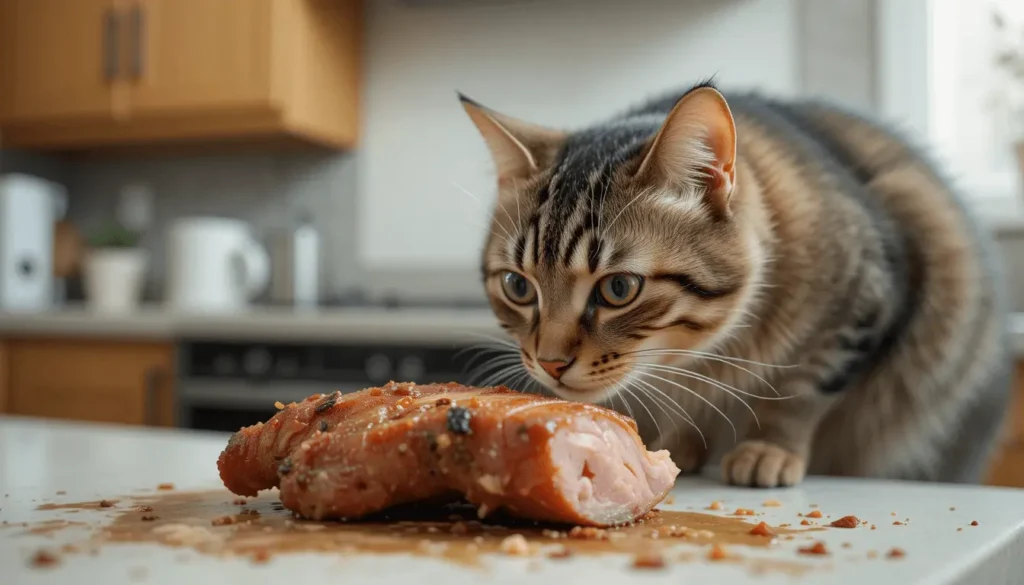
When Is Pork Safe for Cats?
While pork isn’t ideal for cats, there are rare instances where it might be acceptable in strict moderation. Here’s what you need to know before sharing even a tiny bite with your feline friend.
1. Plain, Well-Cooked Pork in Small Amounts
If you absolutely want to give your cat pork, follow these non-negotiable rules:
- No seasoning: Must be completely free of garlic, onions, salt, spices, and sauces.
- Lean cuts only: Trim all visible fat to reduce pancreatitis risk.
- Fully cooked: No pink meat—internal temperature should reach 145°F (63°C) to kill parasites.
- Tiny portions: No more than 1-2 small, shredded pieces occasionally (not a regular treat).
Vet Insight: The American Veterinary Medical Association (AVMA) warns that even “safe” pork should make up less than 10% of a cat’s diet.
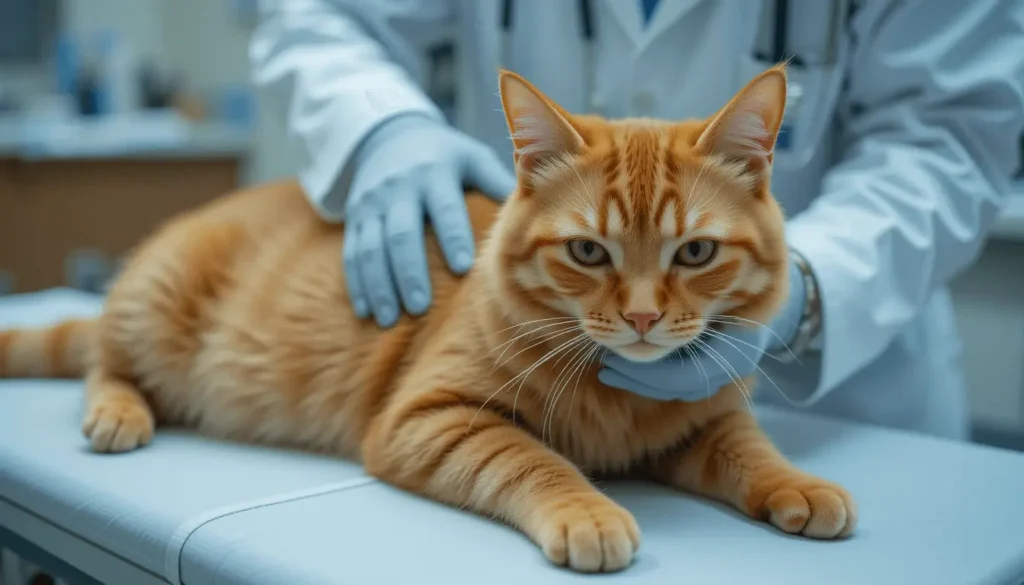
2. Avoid Processed Pork at All Costs
Bacon, ham, sausages, and deli meats are far more dangerous than plain pork due to:
- Extreme sodium levels (can cause salt poisoning)
- Nitrates and preservatives (linked to cancer in pets)
- Added sugars and smoke flavorings (toxic to cats)
Did You Know? Just one slice of bacon contains enough fat and salt to make a 10-pound cat seriously ill.
3. Special Cases: Consult Your Vet First
Some cats may have unique dietary needs, such as:
- Underweight cats needing calories (but vet may recommend safer fats like fish oil)
- Cats with protein allergies (pork is not a common hypoallergenic option)
- Senior cats with kidney disease (high phosphorus in pork can worsen their condition)
Bottom Line: Unless your vet specifically approves pork for your cat’s medical needs, it’s better to skip it entirely.
Healthier Meat Alternatives for Cats
Since pork is risky, what should you feed your carnivorous feline instead? Here are vet-approved, nutrient-rich alternatives.
1. Lean, Cooked Poultry (Best Option)
- Chicken or turkey breast (skinless, boneless, boiled or baked)
- Benefits: High in protein, low in fat, easy to digest
- How to serve: Shred into small pieces (no larger than a pea for kittens)
Pro Tip: Save the broth from plain boiled chicken as a hydration boost (just remove all bones and fat first).
2. Commercial Cat Food (Safest Choice)
High-quality commercial cat foods are formulated for balanced feline nutrition and often include:
- Animal-based proteins (chicken, turkey, rabbit)
- Added taurine (essential for heart and eye health)
- Controlled fat levels (prevents obesity and pancreatitis)
Trusted Brands: Look for brands meeting AAFCO standards, like Royal Canin, Hill’s Science Diet, or Purina Pro Plan.
3. Occasional Raw or Novel Proteins (With Caution)
For cats with food sensitivities, some vets recommend:
- Freeze-dried raw chicken (kills bacteria through processing)
- Rabbit or duck (novel proteins for allergy-prone cats)
- Whole prey (like quail) for a natural diet (only under vet supervision)
Warning: Never feed raw meat without consulting your vet—it can carry salmonella and other pathogens.
Conclusion
While can cats eat pork? isn’t a black-and-white question, the cons far outweigh the pros. Pork is high in fat, often contains toxic seasonings, and poses parasite risks—making it a poor choice for feline diets. While a tiny, plain, well-cooked piece might not immediately harm your cat, there are far safer, healthier alternatives like lean poultry or commercial cat food.
Key Takeaways
- Avoid processed pork (bacon, ham, sausages)—too much salt and fat.
- Never feed raw pork—risk of parasites like trichinella.
- Lean, cooked pork in extreme moderation only—if at all.
- Stick to vet-approved proteins like chicken, turkey, or balanced cat food.
Need More Guidance?
For further reading, check out these trusted resources:
- Safe Or Not ? Cat Food Guide
- ASPCA – People Foods to Avoid for Pets
- AVMA – Pet Nutrition Guidelines
- CDC – Trichinellosis (Parasite Risk in Pork)
FAQs
Can cats eat pork bones?
No! Cooked pork bones splinter easily, causing choking, intestinal blockages, or perforations. Even raw bones can be risky without supervision.
What if my cat accidentally eats seasoned pork?
Monitor for vomiting, diarrhea, or lethargy. If the pork contained garlic, onions, or excessive salt, contact your vet immediately—these are toxic.
Is pork fat worse for cats than other fats?
Yes, because cats process fat poorly. Pork fat is especially dense, increasing the risk of pancreatitis—a painful and dangerous condition.
Are there any benefits to feeding pork to cats?
Minimal. Pork provides protein, but cats get better nutrition from leaner meats (chicken, turkey) or commercial cat foods fortified with taurine.
Can kittens eat pork?
Not recommended. Kittens have delicate digestive systems and need precise nutrition for growth. Stick to kitten-formulated food.

